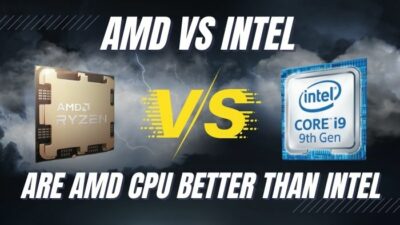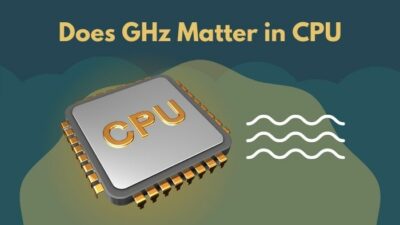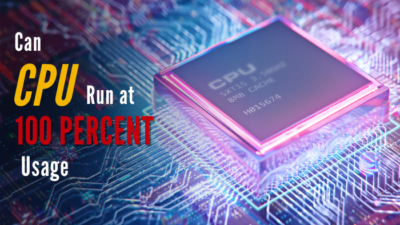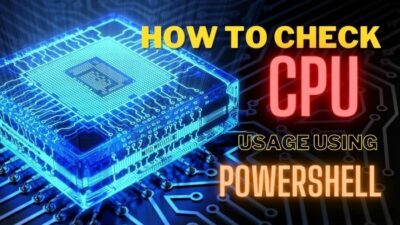Are you putting together your first PC? And got confused seeing a huge chunk of cables? And Couldn’t find where to connect the CPU cable? Or your GPU?
Not long ago, I built a brand new PC from scratch. Connecting the power supply takes a toll on me. I nearly fainted and was dazed seeing so much cable of PSU.
So I researched on the internet and found the easiest way to connect all the cables of PSU.
So Worry Not!! I’m here. Read this article, and your confusion will go away in no time. Also, in the article, I will give you some Pro tips, so read it thoroughly.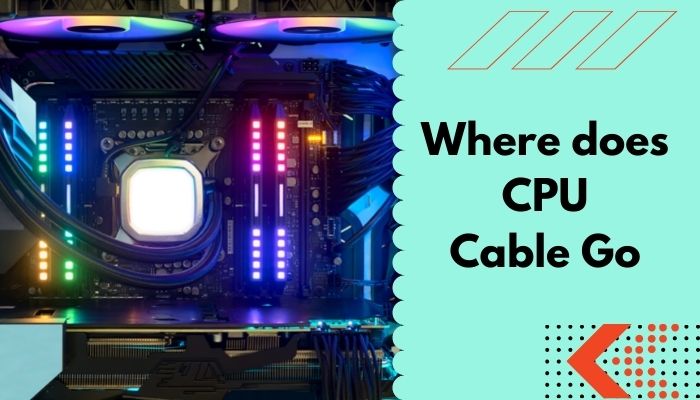
Where should you Connect CPU Cable?
The cable that powers the CPU is called EPS cable. Usually, the CPU cables fit into a 4+4 CPU socket which is located near the processor socket of your motherboard. It almost looks identical to the PCIe cable, so many users make a mistake by trying to interchange them. But CPU and PCIe cable are different.
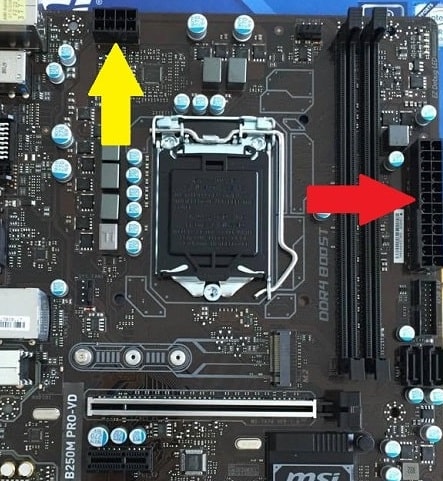
When you build a pc, the main hassle is managing the cables. The power supply looks like a many-legged Squid when you try to build your first PC.
The cables of the PSU are constructed in different ways so that they can perform different purposes. Like the SATA cable used for connecting the SSD and HDD of your PC.
However, the PCIe and EPS are identical in looks but serve different purposes. For their similar looks, many users get confused. The PCI-e cable is 6+2pin. On the other hand, the EPS cable is a 4+4pin cable. For this, The PCIe is used for connecting the GPU and EPS for the CPU.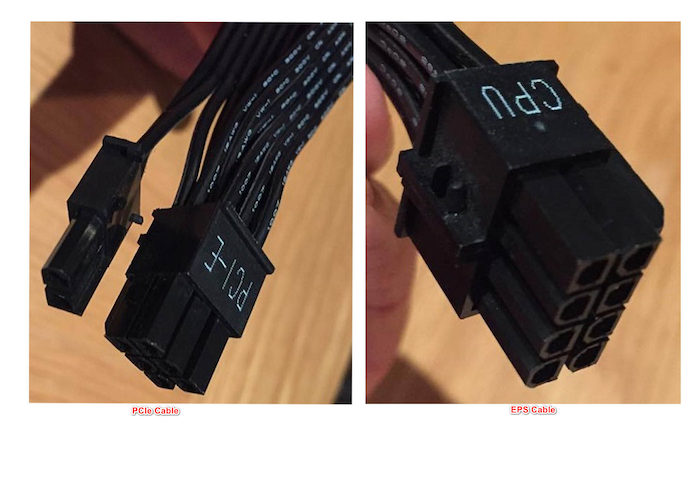
The CPU Connector has 4 12V lines and 4 Ground lines, while a PCIe cable has 3 12V. So the EPS cable has more power than the PCIe cable. For this reason, the PCIe cable won’t be able to run on the CPU.
4pin vs. 8pin: Which One is Better for You?
Generally, the EPS power connector has 4+4pin or 8pin. The 4pin provides the base power that runs the CPU. So you may ask why there is an extra 4pin socket?
The extra 4pin socket is for stability when you overclock your PC. Overclocking Pc needs extra power as well as heavy gaming. So the motherboard suited for those kinds of uses generally has an 8pin EPS connector.
Thus the extra 4pin connector is not needed if you are doing the base computer stuff.
But for heavy-duty work, the 4pin isn’t sufficient. There is a risk of burnout CPU/PSU if you use a 4pin connector in heavy-duty work.
However, Cheap motherboards are equipped with only a 4pin connector. If that’s the case, then connect only 4pin to the motherboard.
Keep in mind you cant do heavy-duty work in those kinds of motherboards.
How to Test My CPU Power Connector
To check your power connector, you need to follow some steps. But beware, there is a good chance of getting a shock of 24Volts. So take necessary precautions.
Here are the steps of testing the CPUs power connector
- At first, unplug the connection of your power supply.
- Then make a U-shaped connector. You can use a paper clip or a piece of copper wire, or any conductor type metal. (like the image)
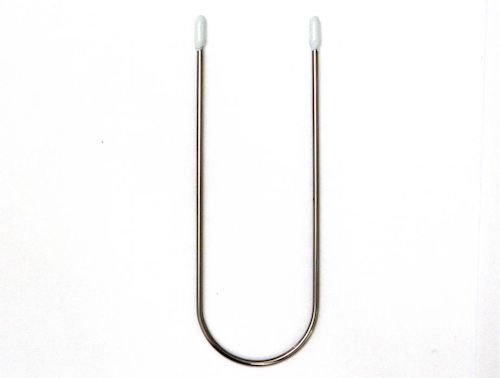
- After that, Unplug the 24pin power connector from your motherboard.
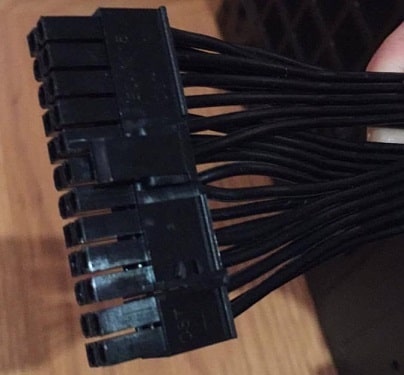
- Next, find the green pin and the black pin. If your PSU’s 24pin power connector doesn’t have color, then connect pins no 15 & 16.
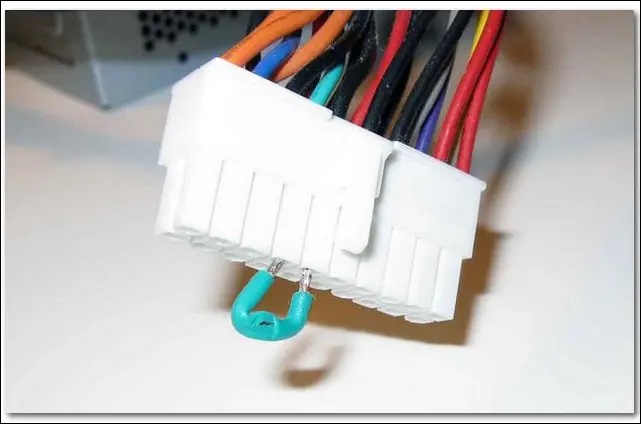
- Then, Plug the PSU and check for the fan. If the fan starts, then the Power connector is ok. And if you don’t, then your PSU is out of service.
Here’s a complete guide on where does the PWM cable go.
What are the Available Power Cables?
Cables work as a bridge between two different components. And the PSU cables make way for the power to reach other components. There are usually 5 types of cable in PSU. They are
- The 20/24 ATX connector
- The CPU connector /EPS
- The PCI-e Connector
- The SATA Power Connector
- Molex Connector
Here, different types of PSU Cable and their wor are explained :
The 20/24 ATX connector:
The 20/24 pin is the largest of the power cable. This mainly provides power to the whole motherboard and its components. Each of its power pins contains 12V of electricity, so this 20/24 ATX connector is enough for the Base power requirements of the MOBO.
Currently, most MOBO has 24pin connectors in case of 20pin. The main reason is the extra 4pin powered the PCIe slot in the motherboard where You insert your GPU.
However, High-end GPU will need additional power to operate.

The CPU connector /EPS
Firstly, read the manual and ensure which PSU cable you need.
The CPU power connector mainly powers the processor socket. For the similar look of Both PCIe cable and EPS cable, they are both labeled.
Otherwise, it will be hard to differentiate between them.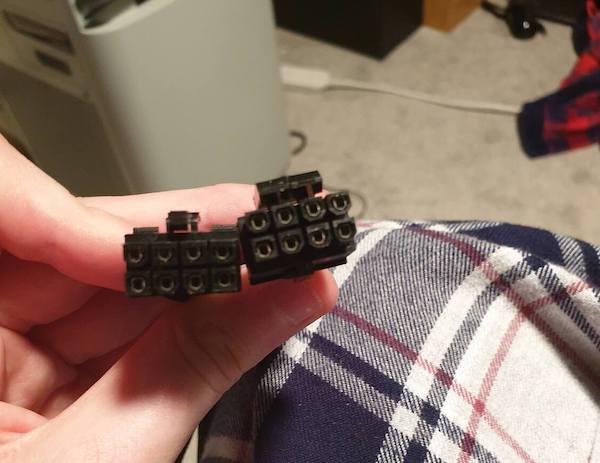
Nowadays, EPS cables differ in terms of PSU as PSU cables are not universal. Here are some variants of EPS cable you may see in the market
- 8-pin
- 4-pin+4-pin
- Or 8-pin+4-pin
- Or an 8-pin+8-pin
The difference in pins is mainly for different power requirements. The 4-pin supply 155W, the 8pin 235W, 12pins provide 390W, etc.
These cables provide the necessary power for stabling Heavy-duty CPU; otherwise, a 4pin slot is enough.
The PCI-e Connector:
The PCIe cable provides power to the GPU. The 24pin ATX connector power up the slot, but the GPU available in the market needs more than the base power supplied by the 24pin ATX.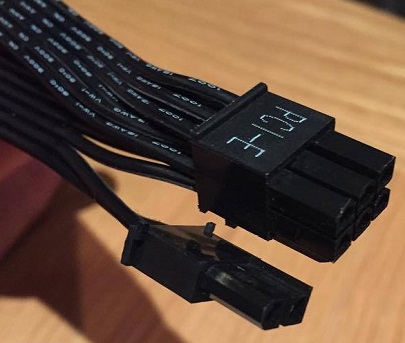
So for those cases, PCIe cable comes to play. At present, for power-hungry GPUs, different PCIe cables are available. Some of them are
- 6-pin
- 6-pin+2-pin
- 6-pin+6-pin
They are mainly used for different power needs like Nvidia GeForce RTX 3060 needs 170watts of power, so it uses an 8-pin connection.
The SATA Power Connector
SATA cable is mainly known for serial advanced technology attachment cable.
This cable mainly powers up your SSD or HDD. Again, if you have any other optical drive, the SATA cable would also powerup up that.RGB and the FAN are in that category. But Your M.2 SSD port doesn’t need a SATA cable to power up.
Molex Connector
Molex cables were used in the older system mainly to connect the casing fans, floppy drives, and some old optical drives. Molex connector did provide more power than SATA cable. But for user inconvenience, Molex cables were replaced by SATA.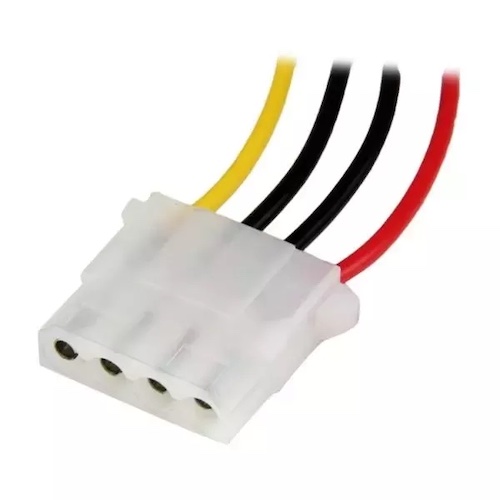
Cable Management Tips
The PSU has many long cables of different sizes and structures. If you don’t manage your cables, the PC will look like a maze. Also, cable management maximizes the airflow, limits the dust buildup, and restricts the loose line.
Some users go a step further and buy extension cables to flare up the rig aesthetically. PSU extension cables are safe to use, by the way.
So here are some Cable Management Tips for you.
- Firstly Bind the not connected cable together and put them under somewhere neat. Under the hard drive cage, it would be a good choice for bonded cables.
- Another tip would be, Don’t cover your coolers or case fans with cables so that fans can maintain airflow consistently.
- Also, Tie your big chunk of unused cable to the side of your case because they may short-circuit your components.
- Last but not least, you should make an order to connect the cable otherwise you’ll have loose cables everywhere that will stick out in the open.
Conclusion
In short, the CPU cable fits into the pins beside the processor socket. The 4-pin connector is enough to run the CPU at base speed, but if you overclock your CPU, it will need more power. And then, you would need the 8-pin connection to run the CPU.
After reading this article, I’m pretty sure that your confusion is clear. Also, in the article, I’ve included some tips regarding Cable Management. Follow this accordingly, and your CPU life will increase.
If you have any other quarry, fill free to ask me. Thank you.

